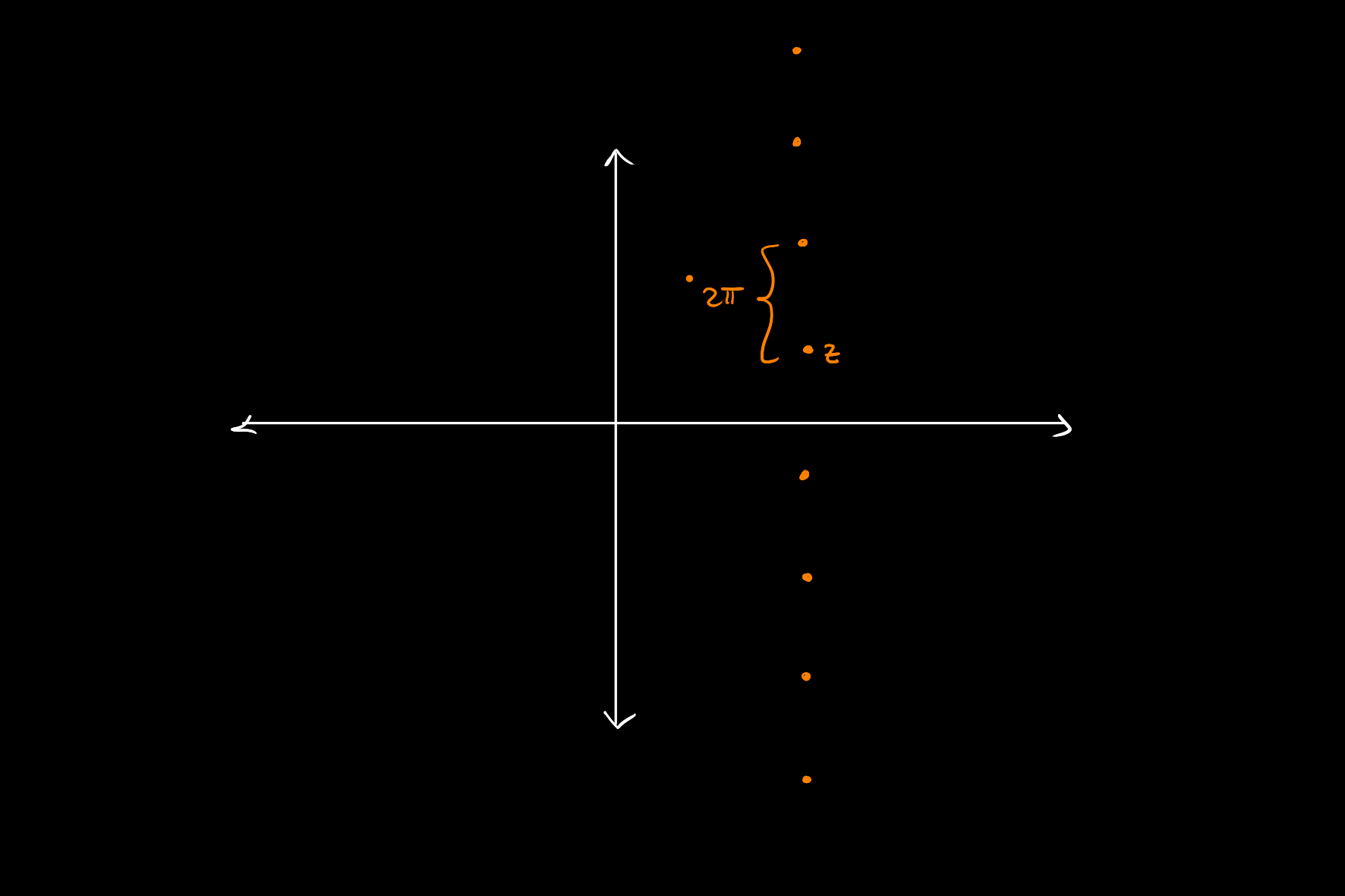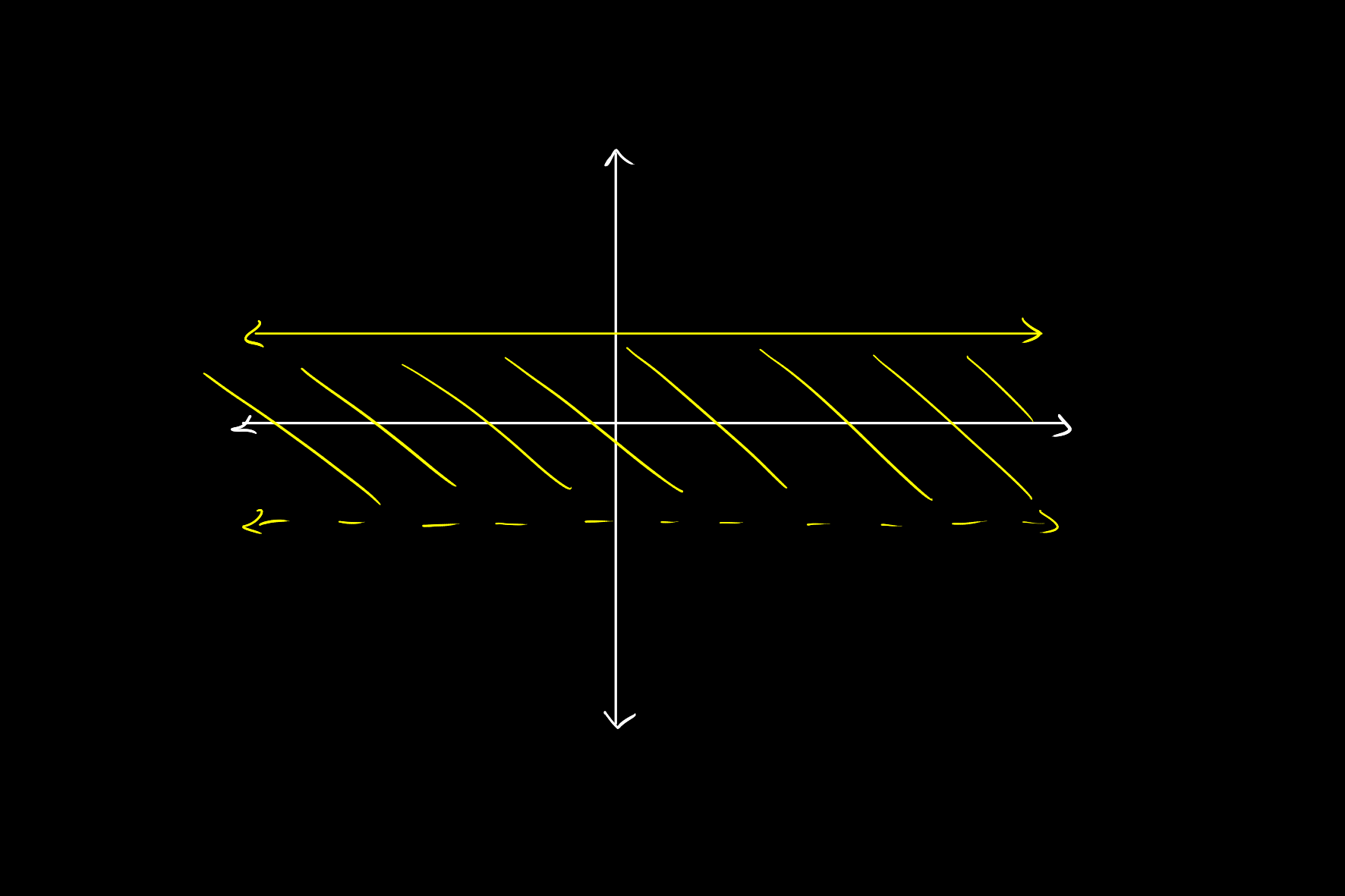Complex Logarithm
The complex exponential function generalises the exponential function for complex numbers, and so a natural question is how to generalise to natural logarithm.
However, in the context of complex numbers, the function
In general, sets of points which differ by a multiple of

If we ignore this for now, we would naturally say that for a complex number
Here the choice of

Now we can use this definition to formalise the characterisation of it as in inverse.
The function
For any
and
for some
For
With this notation,